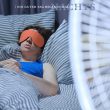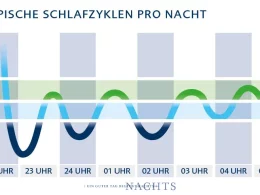OK, we think we know that the Sandman is no longer a mythical figure from Western European mythology, but actually exists: He is dispatched every evening from the broadcasting centre of Mitteldeutscher Rundfunk MDR to the whole of Germany to pull the wool over our eyes. That’s a good thing, but it doesn’t explain to the more pragmatic and thinking minds among us where the sand or sleep in the eye actually comes from, which remains with us every morning as the last memory of a dreamy night.
Our tear fluid is the sleeping sand in our eyes
The appearance of sleeping sand is based on completely natural foundations: our tear fluid. In addition to water, it consists of various proteins, salts and carbohydrates. The tear fluid fulfils several functions: It rinses the eye and protects it from germs. The tear fluid constantly ‘pushes’ foreign substances and dead components of the cornea slightly towards the inner corner of the eye in order to keep the eye clean.
The tear fluid is produced by glandular cells at the edge of the eyelid and in the conjunctival sac. It consists of a mucous layer as well as an aqueous and an oily layer. The fluid also contains nutrients that supply the superficial cells of the cornea that are not reached by blood vessels.
At night, when we close our eyes, the production of tear fluid decreases, which during the day – supported by constant blinking – still keeps a very close watch to ensure that the eyeball does not dry out. During sleep and behind closed eyelids, however, the tear fluid no longer evaporates. The result is a moist, warm chamber that becomes the ideal breeding ground for bacteria.
To keep these pathogens in check, the white blood cells in the eye fluid are particularly active, but they themselves perish in the defence mechanism. After the water at the edge of the eye has evaporated, these cell debris, together with proteins, cell residues and dust particles, form the sand that we rub out of our eyes in the morning. This is effectively the end product of the eye cleaning and care programme.
How much sand we rub out of our eyes in the morning therefore has nothing to do with the length or quality of our sleep. And certainly not with the sandman.














